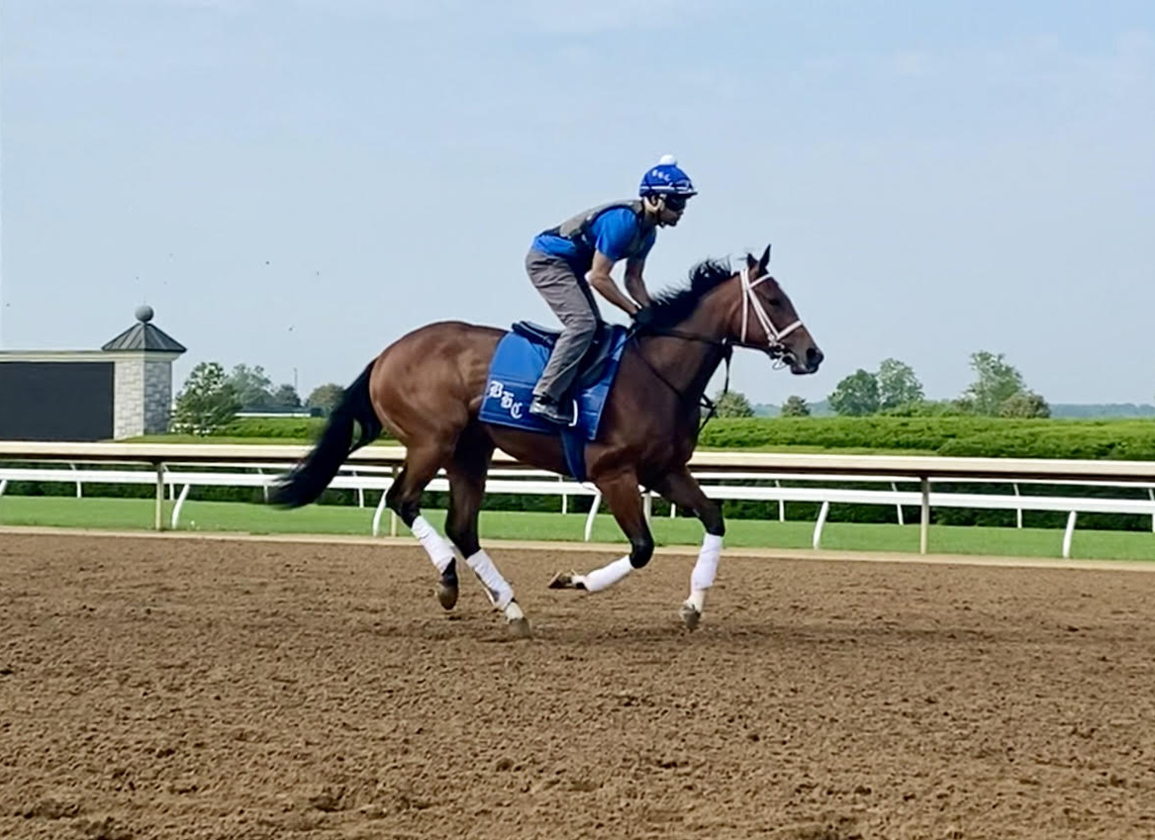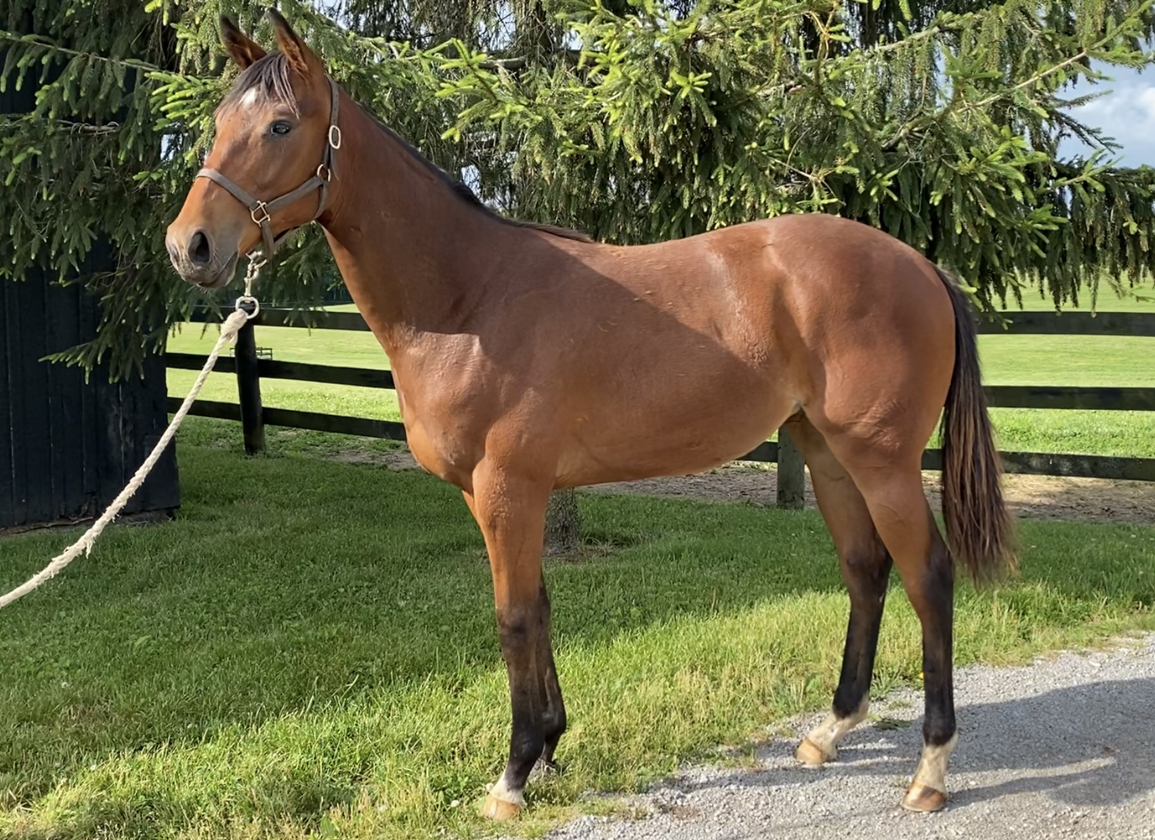In Thoroughbred pedigrees, there are numerous beginnings. These are those moments when a family, seemingly dead or class-impaired, rises again to show speed and fly anew.
This has not been a problem, however, for the family of Mandaloun, who won the Grade 1 Haskell at Monmouth Park via the disqualification of Hot Rod Charlie on July 17. Tracing back in the female line to the 1902 Cambridgeshire Handicap winner Ballantrae, Mandaloun comes from one of the great families of the English and American stud books, and of the 12 generations of broodmares back to Ballantrae, only one in the female line of Mandaloun did not earn black type.
Ballantrae ended her days in the stud of Marcel Boussac and produced Coeur a Coeur (by Teddy), the second dam of classic winner Djebel (Tourbillon) as her final foal in 1921 for Boussac. In Ballantrae's younger days, she crossed the Atlantic twice and the English Channel multiple times, and her most famous descendants outside the Boussac stud came successively in the studs of the Whitney family.
W.C. Whitney owned the mare when she won the Cambridgeshire, and he first sent her to America in 1904. In the States, Ballantrae produced a few nice foals before Clarence Mackay sent her to his stud in France.
Among Ballantrae's daughters in France, the first of great note was Balancoire (Meddler), bred by Mackay and winner of the Prix La Fleche. At stud, her two sons made better racehorses, but her daughters made history. H.P. Whitney had acquired Balancoire and brought her to his Brookdale Stud. There she produced Blondin (Broomstick), winner of the Empire City Derby and Long Branch Stakes and second in the 1926 Preakness Stakes, and Distraction (Chicle), winner of the 1928 Wood Memorial and eight other stakes.
Five of Balancoire's six daughters produced stakes winners, and of the group, the most important producer was Blondin's full sister Swinging, who was second in five stakes but never won one. Swinging's first foal was Equipoise (Pennant), who stood at or near the top of his class at 2, then again at 4 through 6, having missed his important 3-year-old season engagements due to a quarter crack.
Despite missing the classics, two of which were won by his archrival Twenty Grand, Equipoise is considered one of the great racehorses of American racing, as well as an important stallion. His best offspring was probably Shut Out, winner of the 1942 Kentucky Derby and Belmont Stakes.
Owned by C.V. Whitney, Equipoise died after only four crops, and sadly, his dam Swinging produced only three foals. In addition to Equipoise, she foaled Cito (St. James), who ran second in a steeplechase stakes, then after six empty years, the mare produced Equipoise's full sister Schwester, who did not race.
The two best of Schwester's produce were the full siblings Recce and Mameluke (both by the Whitney stallion Mahmoud, a Derby winner and son of Derby winner Blenheim). Mameluke won the Blue Grass and Metropolitan but is rarely seen in pedigrees; his sister was virtually of equal racing class, winning the Correction Handicap and finishing third in the Pimlico Futurity against colts, and she is one of the marvels of the Whitney Stud and 20th century American breeding.
From Recce come such important racers as Fun House (winner of the Del Mar Oaks and Ramona), Court Recess (Gulfstream Park Handicap), Chompion (Travers), Divine Grace (Oak Leaf Stakes), Quicken Tree (Jockey Club Gold Cup and Santa Anita Handicap), G1 winner Court Ruling, and the stakes winner and important South American sire Good Manners (Nashua).
One of the fastest of Recce's descendants was stakes winner Swoon's Tune (Swoon's Son), who produced Kentucky Oaks winner Bag of Tunes (Herbager) and multiple graded stakes winner Swingtime (Buckpasser). The mare's first foal didn't win a stakes, but Song Sparrow, a daughter of English classic winner Tudor Minstrel, did finish second in the Alcibiades Stakes at Keeneland.
At stud, Song Sparrow produced the good racehorse and sire Cormorant (His Majesty) and his full sister Queen of Song, who is the fourth dam of Mandaloun. A winner of 14 races from 58 starts, Queen of Song was talented and tough, with her victories including the G2 Shuvee Handicap at Belmont Park.
Early in the mare's stud career, Juddmonte Farms acquired Queen of Song at the 1989 Keeneland November sale for $700,000 in foal to Triple Crown winner Seattle Slew. The resulting foal was the fourth from the mare, who had produced Ladyago (Northern Dancer) as her second foal, and that filly had earned black type at 2 before her dam sold at Keeneland, then won a stakes at 3.
Ladyago was the only stakes winner that Queen of Song produced, but she foaled four stakes-placed racers for Juddmonte, beginning with Wise Words, the Seattle Slew colt of 1990. Then came G2-placed Private Song (Private Account), Easy Song (Easy Goer), and Aspiring Diva (Distant View), who was her dam's last foal and finished third in the listed Prix Herod in France in 2000.
About the time that Aspiring Diva was retired to stud, her dam must have looked like a worthy attempt that hadn't quite hit the mark, but surely one reason is that Queen of Song produced only two fillies for Juddmonte through the decade-plus of her residence in its broodmare band.
How things change.
Resident in England at Juddmonte's Banstead Manor, Aspiring Diva produced a trio of stakes winners: listed winner Daring Diva, G1 winner Emulous, and G3 winner First Sitting, all by Juddmonte stallion Dansili. Daring Diva's first two foals were listed winner Caponata (Selkirk) and Brooch (Empire Maker), who is the dam of Mandaloun.
On the racecourse, Brooch won a G3 and a G2 in Ireland, whereas her half-sister had managed only a pair of placings at each of those levels. Brought back to Juddmonte Farm in Kentucky, Brooch began her career as a broodmare the right way, with a winner by Speightstown named Radetsky, and Mandaloun is the mare's second foal.
The mare has a yearling and a 2-year-old full brother to the Haskell winner, as well as a War Front colt of 2021.
Frank Mitchell is author of Racehorse Breeding Theories, as well as the book Great Breeders and Their Methods: The Hancocks. In addition to writing the column “Sires and Dams” in Daily Racing Form for nearly 15 years, he has contributed articles to Thoroughbred Daily News, Thoroughbred Times, Thoroughbred Record, International Thoroughbred, and other major publications. In addition, Frank is chief of biomechanics for DataTrack International and is a hands-on caretaker of his own broodmares and foals in Central Kentucky. Check out Frank's Bloodstock in the Bluegrass blog.
The post Bloodlines: Rich History Flows Through Mandaloun’s Female Family For A Dozen Generations appeared first on Horse Racing News | Paulick Report.


